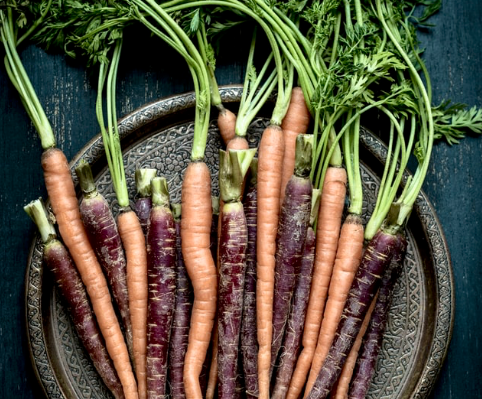Have you ever stopped to think about how or why food tastes the way that it does? I remember watching someone eat a carrot soup puree (which was only boiled carrots, water, onion, and olive oil) and say “this tastes nothing like carrots,” and being shocked at the idea that someone could say that boiled carrots from the ground don’t taste like carrots. And then it hit me: he’s probably used to the baby-cut carrots which are cut, polished, and soaked in chemicals to preserve their shape. They taste nothing like carrots. It makes me sad to think about how far removed our world is from the most basic source of nourishment: food from the earth. Ayurveda teaches us that the more natural, organic, of the earth we can be, the healthier our bodies, minds and spirits will be too.
Ayurveda also teaches us about the six tastes in nature, which are: sweet, salty, pungent, sour, bitter, and astringent. We’ve already touched on the other five, and so today, we’re going to look at astringent-taste.
Astringent is very grounding, and foods/herbs with an astringent taste can help us feel calm, cool, collected. This taste helps the mind organize information and put things into their proper place, and helps us compartmentalize our feelings and observations of the world. Physically, it helps heal wounds and stop bleeding quickly, acts as a diuretic, expectorant, anti-inflammatory and decongestant. Like bitter, it also scrapes fat. Too much astringency can create neuromuscular complications like spasms, bells palsy, strokes, and convulsions. It can also lead to depleted sex drive, constipation, dryness of the mouth and distention.
Astringent-taste aggravates Vata, balances Pitta and Kapha (doshas), and is comprised of Air and Earth elements. Astringency primarily acts upon the colon, and affects the plasma (rasa), blood (rakta), muscle (mamsa), and reproductive tissues (shukra—male, arthava—female).
It often has a tart taste, and sticks to the palate when you eat it, creating a roughened feeling; it is usually produced by tannins in the barks, leaves and outer rinds of fruits and trees, and often leaves us with a chalky, dry sensation in the mouth. Its main attributes are cooling, light and dry.
Some examples: white oak bark, witch hazel, comfrey, plantain leaves, dandelion leaves, lotus seeds, nettles, sumac, ginko leaves, pomegranate, bay leaf, nutmeg, oregano, poppy seeds, saffron, turmeric, vanilla, chickpeas, parsley, beans, chicken, popcorn, avocado, brussels sprouts, potatoes, peas, raw carrots.
Astringent might not be the most talked about or trendy taste out there, but it’s incredibly important for us to incorporate it (in balance) into our diet. If you need support in creating a nourishment plan that’s right for you, we’re here every day of the week to support you.
Sources
“Ayurvedic Tongue Diagnosis,” by Walter Shantree Kacera, 2006.
